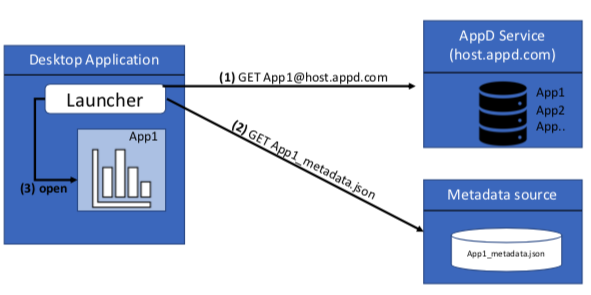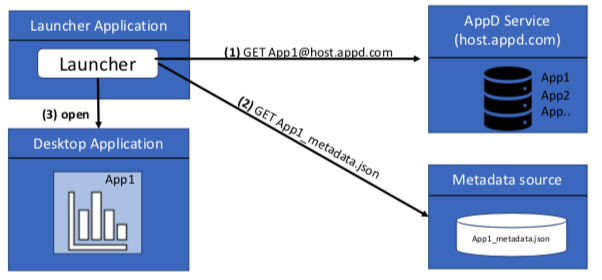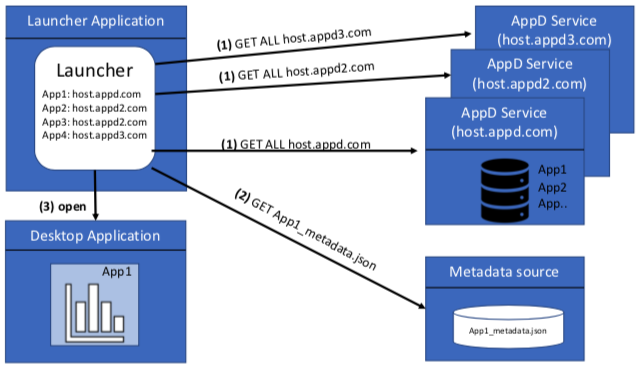App Directory Use
An application directory (AppD) provides information about an application's identifiers, intents that provide contexts, and location of metadata providing information specific to the launching and integration of the application.
In the real world the AppD would support many use cases as defined in the FDC3 Use Cases
The following provides some common use cases and benefits.
Embedded Launcher
A desktop application has the ability to launch (or initialize) an application by retrieving all necessary data via a REST call(s) to an AppD service and metadata location. As described in the AppD Discovery section, this call requires an application identifier (app1@host.appd.com), which can be used to both locate the AppD service and key to retrieve the specific application data. The resulting application data will describe the application and the metadata URI or the actual metadata in JSON format. If the metadata is a URI, the launcher would retrieve the metadata file from the URI.

Standalone Launcher
In more advanced cases, there could be a need to execute different types of desktop applications, such as web browser or general native application (exe, binary). A common approach to support this pattern would be to create a standalone launcher application that has the ability to query application data from the AppD and executes the desktop application that can run the required application. This is also convenient if you wanted to display all possible applications to launch in a single view.

Aggregated View
There could be many different AppD service instances in the world providing application data zoned to the provider or enterprise deployment. The AppD specification allows for unique instances of the service with no requirement to aggregate data or define a structured hierarchy. With this said, a launcher might want to construct an aggregated view of applications from one or more AppD instances. In this case, the launcher would be required to retrieve multiple application definitions from one or more AppD instances providing a consolidated view of all applications required. Today there is no intention to create a single registry of known AppD instances, so there is an assumption that the launcher will have prior knowledge of the AppD instance location (FQDN).

Enhancing controls
The AppD API specification defines the optional use of an access token to identify the requesting user/launcher and implement authorizations around which AppD actions can be performed. Actions are considered standard CRUD operations. Again the specification does not define or make mandatory any authorizations or roles that a provider or enterprise can define.
With this said, it is highly recommended that the implementation take advantage and utilize an access token to support these controls. In most cases simple use of roles like "admin" and "user" would be adequate to create separation between producer and consumer.
Alternatively a more open approach can be defined, where producers of a new definition are automatically set to "owner" of the the definition.
In more advanced use cases, actual entitlements can be applied to limit access to specific applications and associated actions based on the source user/launcher identity.
In all examples, it is up to the implementation to define and engineer the solution based on individual requirements. There are too many variations in approach and technology to define a single specification.
Reference Implementation
AppD POC
Please view readme on the AppD POC GitHub .
Launcher
TBD